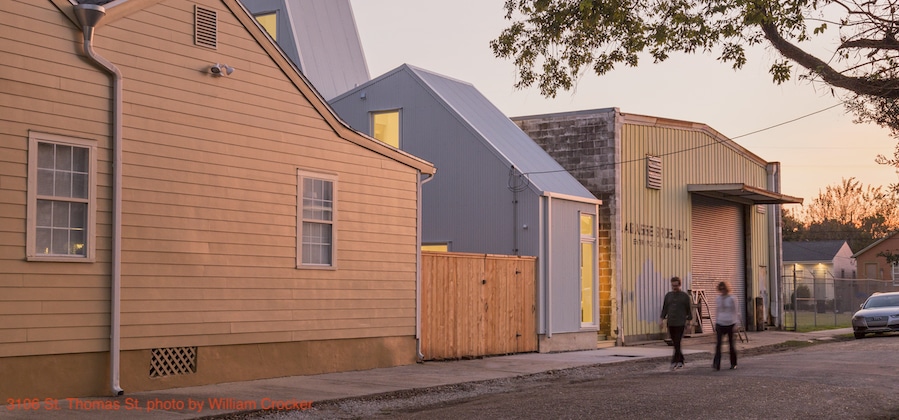
Market conditions necessitate a radical shift in the way we think about housing as investors. While creeping housing bloat has afflicted the broader market for decades, the trend towards urbanism and millennial-driven demand for centrally located, affordable living spaces has led to the rise of alternative housing developments– and alternative financing and investment paths.
The rise of formulaic development
The market embrace of mid-rise housing and the typology surrounding multi-family housing has led to a situation where the homogenization of urban environments is of growing concern to urban designers and other city and real estate professionals. Put another way- every development is starting to look the same.
Most new developments fit a similar pattern of a four-over-two, or a three-over-one, where the base is not constructed non-combustible. That bottom floor may be a parking lot, a lobby, or retail shops. Above that, you have three to four levels of housing. This model has always been present in urban areas, and it continues to grow in popularity to meet changing tenant needs.
Urban areas out of reach
Across the United States, urbanization is a significant driver of property values in cities. Metro areas like New York, San Francisco and Atlanta have benefited from explosive growth for almost a decade now. This has left a considerable segment of first time (and other) home buyers without the ability to purchase homes due to financial constraints. This challenge presents an opportunity for developers who take advantage of nontraditional lots and properties.
The value in unrealized urban property and land
Investors in cities from New Orleans to New York City, are taking a second look at unrealized urban property and land that has gone unnoticed until now. Often located on small and oddly shaped plots, unrealized land presents an opportunity for developing properties that appeals to buyers in the market for starter homes, retirement cottages, and everything in between. This is supported by a growing awareness that cities are the most sustainable places to live making these formerly discarded lots look ever more attractive. Micro-homes are particularly well-suited for construction on these properties.
Small lots as a framework for starter homes
To meet the challenge of the affordability crisis, developers need to find ways to make starter homes more attainable. This benefits new homeowners who may otherwise be priced out of a neighborhood or city. It also helps investors and developers. The ability to place micro-homes on small lots opens up an entirely new, previously underserved market with a scalable development model that you can use from Austin, Texas to Portland, Oregon.
Distinct ways of living
Developers and investors need to keep pace with how Americans choose to live, work, and play. New housing models and other work-live cooperatives or co-living arrangements are gaining popularity, particularly in urban areas. These projects differ in scale, goals and methodology, but all aim to change the way we think about housing.
Crowdfunding to finance new housing models
Lenders and institutional real estate investors tend to follow predictable models. They have to set and hit financial targets to remain solvent, and there is little room for error. This is partially the reason we see so many of the same buildings in city after city. Those buildings work for their financial goals. Trying something new may rock the boat. But we need creative new ideas to solve this growing problem. We need creative new ideas to innovate in cities.
Crowdfunding offers alternative financing to help get nascent micro-home and co-living spaces out of the planning stages and into construction. These platforms could give developers, architects and other real estate experts the ability to source capital to develop projects that would have otherwise fallen by the wayside. A micro-home community in downtown Cleveland might not be profitable for a mega-developer, but it may be a viable opportunity for a smaller investor using a crowdfunding site.
_
The housing market is changing. As investors, we need to change as well. Embracing alternatives to traditional housing exposes you to opportunities to generate profit from previously underserved market niches in cities across the country.
Image courtesy of OJT (Office of Jonathan Tate)
